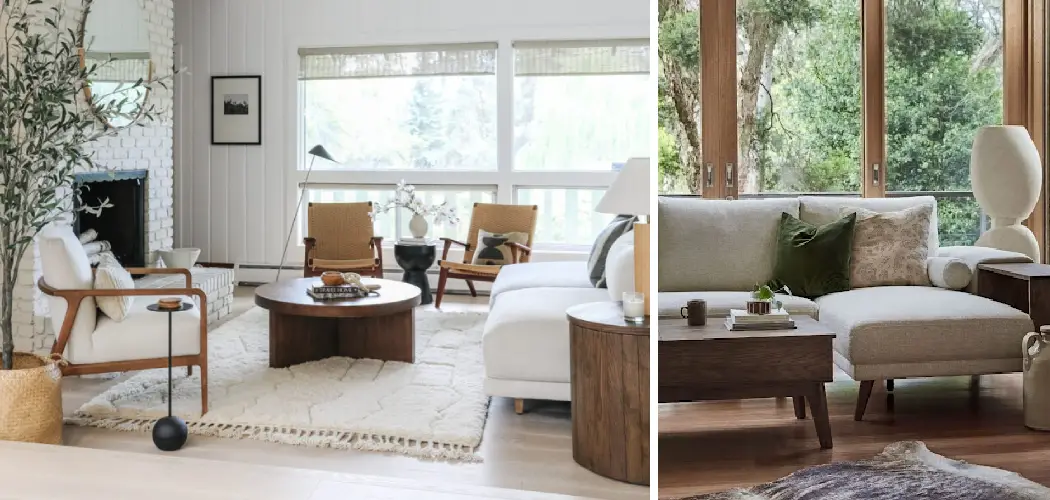Are you tired of the same old matching end table sets in your living space? Do you want to add some personality and style to your home decor?
When it comes to interior design, the most minor details can significantly impact a room’s overall aesthetic. Mixing and matching end tables is a perfect way to add character and style to your living space. With various styles, materials, and finishes available, selecting the right combination of end tables can transform a mundane setup into a vibrant and cohesive ensemble. The key to successful mixing and matching involves balancing contrast and complement, ensuring that each piece harmonizes with your existing decor while standing out as a unique element.
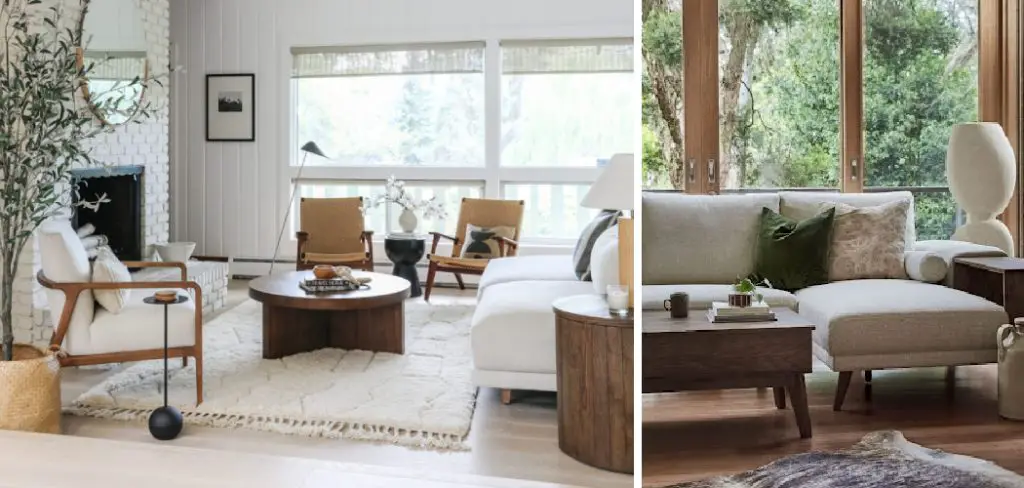
This guide will provide you with essential tips and strategies on how to mix and match end tables.
What Will You Need?
Before you get started, gather your tools and materials. You will need the following:
- Tape measure
- Notepad and pen
- Budget for purchasing new end tables (optional)
Once you have your supplies ready, you can begin the fun process of mixing and matching end tables.
10 Easy Steps on How to Mix and Match End Tables
Step 1: Assess Your Space
Before mixing and matching end tables, take a moment to evaluate your living space. Measure the dimensions of the area where the end tables will be placed to ensure they fit comfortably without overwhelming the room. Consider the existing furniture and overall style of the room to identify the type of end tables that would complement the space. Make notes of any color schemes, textures, or themes present, as these will guide your selection process and help create a cohesive look.
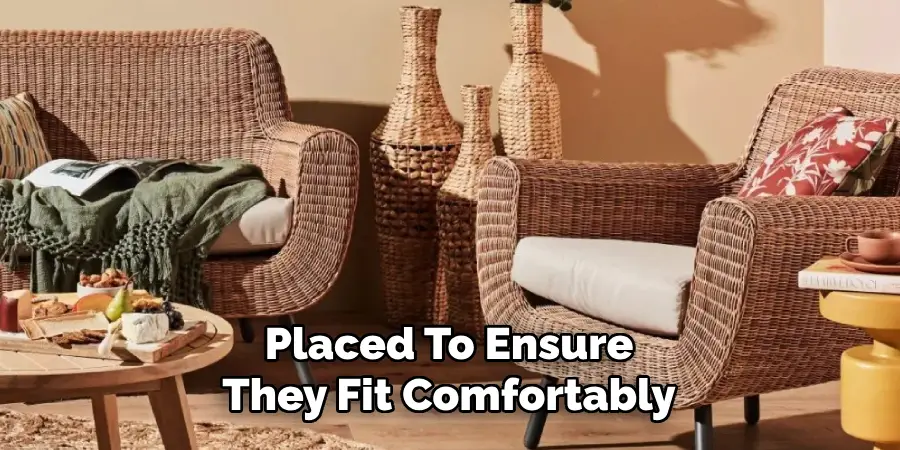
Step 2: Choose Your Base
Selecting a base for your end tables involves deciding on the fundamental style or material that will set the tone for your ensemble. Begin by identifying whether you want a dominant theme, such as modern, rustic, or eclectic. Each choice will influence your selected materials, such as wood for a rustic feel or glass and metal for a contemporary touch.
Consider the dominant color palette already present in your room; choosing a base that complements these colors will help create a unified look. Think about the textures as well—smooth surfaces may resonate with a sleek, modern room, while a rough, unfinished look might suit a more bohemian setup. Once you have decided on the base, use it as an anchor to mix other styles, colors, and materials, ensuring that each piece feels intentional and purposeful in your design.
Step 3: Mix and Match Styles
Once you’ve established a base for your end tables, adding variety by mixing different styles is time. Consider incorporating end tables that deviate from the dominant theme but still maintain harmony with the base. For example, if your primary style is modern, you might introduce a vintage piece to add character and warmth. The key to successfully mixing styles is to find common elements—a shared color, material, or shape—that tie the differing pieces together. Mixing styles can create a dynamic and exciting look, providing visual interest without clashing with the existing decor.
Step 4: Balance Sizes and Heights
When mixing and matching end tables, balancing their sizes and heights is essential to ensure a pleasing visual flow. Aim for a balanced look by pairing end tables of varying heights and sizes without veering too drastically. A taller, slender table can sit next to a shorter, bulkier one, creating a dynamic silhouette without overwhelming the space. This balance keeps the room from feeling cluttered and allows each piece to stand out while contributing to a harmonious look.
Consider the proportions of the existing furniture, such as sofas and chairs, to ensure that the tables complement rather than compete with these elements. Balancing sizes and heights will help create a smooth, visually appealing landscape that enhances the room’s overall aesthetic.
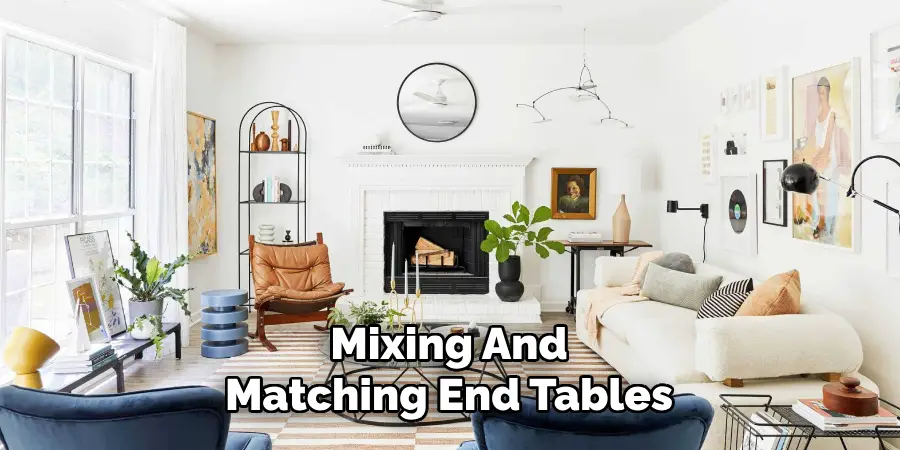
Step 5: Play with Colors and Finishes
Experiment with different colors and finishes to add depth and interest to your end table arrangement. Incorporating a variety of hues can enhance the visual appeal, but aim to stay within a cohesive palette that complements your existing decor. Select end tables that feature muted tones or finishes that mimic those found throughout your space for a subtle, harmonious look. Alternatively,
feel free to introduce bold colors or unique finishes as accents, as these can serve as focal points and invigorate the overall scheme. Mix matte and glossy surfaces to play with texture, adding layers that can catch the light differently and elevate the room’s aesthetic.
Step 6: Incorporate Different Shapes
When mixing and matching end tables, don’t shy away from experimenting with a variety of shapes. Introducing tables in different geometric forms, such as round, square, or oval, can break the monotony and add visual interest to your space. Curved tables offer soft transitions that can contrast beautifully with the straight lines of rectangular or square pieces. Similarly, using angular tables and circular forms can create an intriguing juxtaposition, lending a modern edge to the arrangement. As you incorporate different shapes, consider how they interact with the room’s existing architecture and furniture. The objective is to create a balanced and dynamic layout that feels inviting and well-curated, highlighting your creative flair while harmonizing with the overall aesthetic of your home.
Step 7: Add Layers with Textiles
Incorporating textiles into your arrangement of end tables can add an additional layer of texture and warmth to your space. Consider placing a decorative runner or a small area rug beneath your tables to delineate the area and anchor the pieces. Textiles like tablecloths, throws, or even placemats can introduce color, pattern, and softness, balancing the hard surfaces of the tables with a cozy feel.
Choose fabrics that coordinate with your room’s color scheme and overall style to ensure continuity. Using textiles is an easy way to update your space seasonally or whenever you wish to refresh the ambiance without a major overhaul. By layering with textiles, you add comfort and a touch of personal flair, enhancing the visual and tactile appeal of your end table arrangement.

Step 8: Personalize with Accessories
Accessorizing your end tables is the final step to personalize and complete your space. To add a unique touch, select items that reflect your personality and interests, such as vases, books, or sculptures. Consider incorporating plants or flowers to introduce a bit of nature, adding freshness and life to the room.
Use these accessories to create visual layers; varying their heights and sizes can introduce movement and depth to the arrangement. Ensure the items you choose to maintain the room’s color palette and thematic style, tying together the various elements for a cohesive look. Personal accessories transform a functional piece into a focal point of decor, allowing you to showcase cherished items and infuse your own character into the space.
Step 9: Maintain Functionality
While aesthetics are important, ensuring that your end tables remain functional in your living space is essential. Consider how you use these tables daily and cater to the design to meet practical needs. If your end tables serve as resting spots for drinks, ensure ample space for coasters or trays to prevent damage. For tables that double as storage units, opt for designs with drawers or shelves to keep items organized and easily accessible. Keep the necessities close at hand, such as reading glasses, a remote control, or a lamp, without overcrowding the surface. By prioritizing functionality, you can enjoy a visually appealing setup that effectively serves your lifestyle and enhances the room’s usability.
Step 10: Evaluate and Adjust
After setting up your end tables, take a step back and evaluate the entire arrangement in the context of the room. Observe the balance, symmetry, and overall flow. Ensure that the colors, shapes, and heights complement each other and align with the broader aesthetic of the space. Sometimes, an arrangement that seemed perfect on paper may need adjustments in practice. Feel free to make changes, whether swapping out a piece, repositioning a table, or tweaking accessories. This final evaluation phase allows you to refine and perfect your setup, ensuring it meets both aesthetic and functional needs. By critically assessing and adjusting your arrangement, you ensure your living space feels cohesive, welcoming, and uniquely yours.
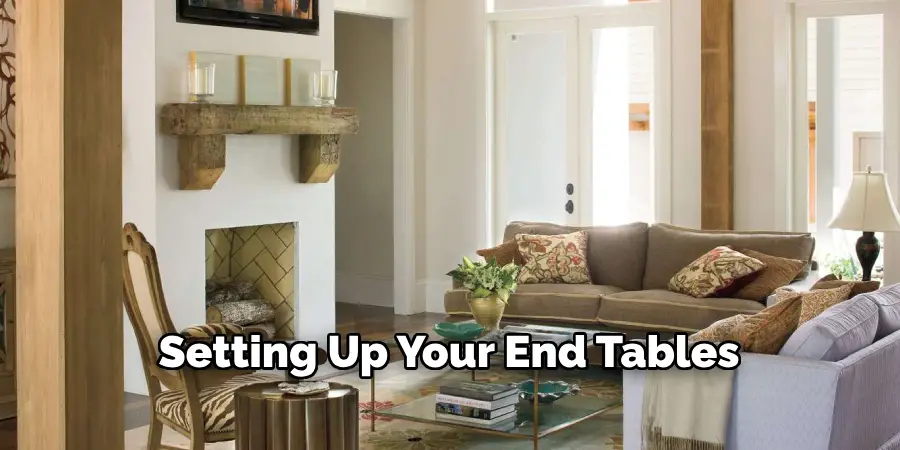
By following these steps, you can create a stylish and functional end table arrangement that enhances your living space.
Conclusion
Mixing and matching end tables can transform your living space into a harmonious and visually engaging environment.
By thoughtfully considering color, shape, texture, and functionality, you can create a balanced arrangement that reflects your style while maintaining utility. It’s important to approach the design process creatively and flexibly, allowing room for experimentation. Adjust elements as needed until you achieve a cohesive setup that complements the entire room. Remember, the goal is to enhance the space with a combination of aesthetics and practicality, ultimately creating an inviting atmosphere that showcases your unique flair.
Hopefully, the article on how to mix and match end tables has provided valuable insights and inspiration for your next interior design project. Happy decorating!
you can also check it out Place a Rug Under a Desk

